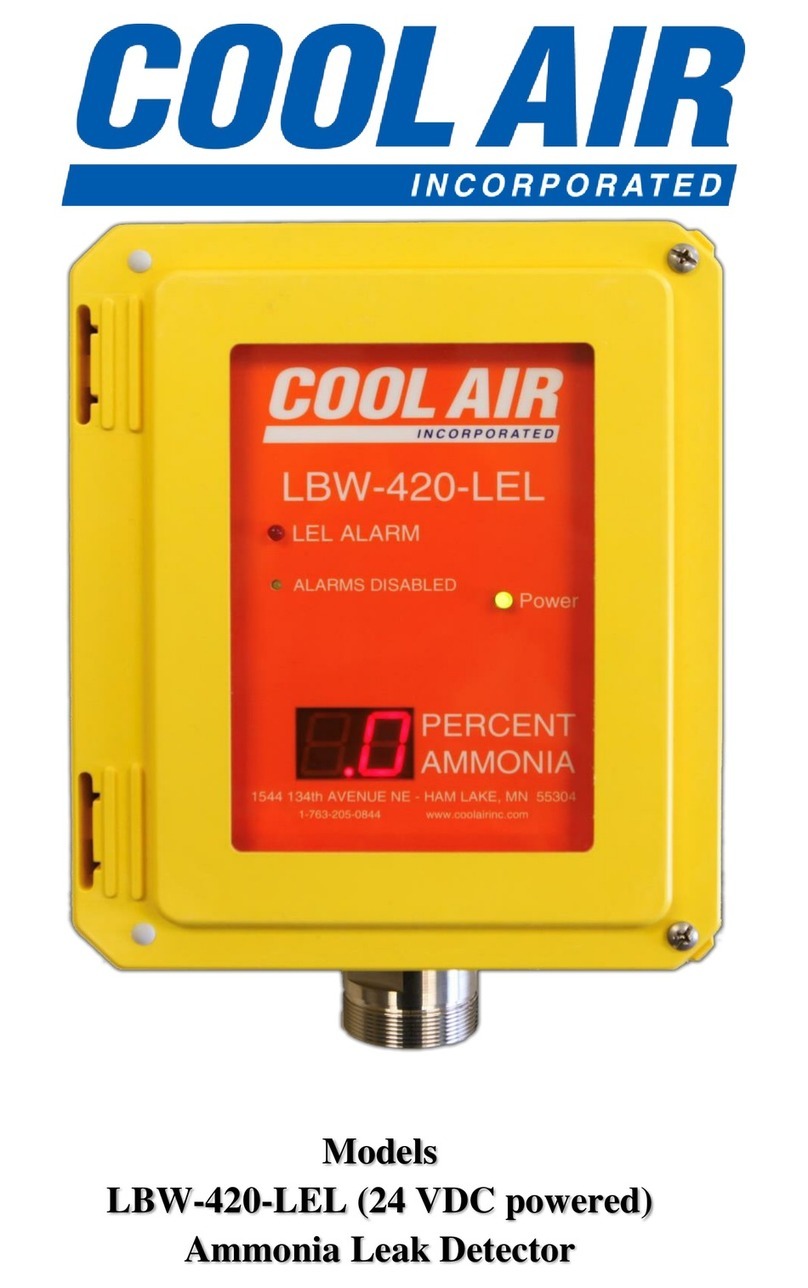
Copyright © 2022 by Cool Air Incorporated. All rights reserved.
TABLE OF CONTENTS
CAUTION & SYMBOL DEFINITIONS .................................................... 2
IMPORTANT—READ THIS FIRST.......................................................... 4
CAUTIONS .......................................................................................................4
INTRODUCTION......................................................................................... 5
STANDARD FEATURES ............................................................................ 5
PARTS DESCRIPTION ............................................................................... 6
FRONT PANEL DISPLAY ..................................................................................6
AMMONIA SENSOR ..........................................................................................6
FRONT PANEL-MOUNTED CIRCUIT BOARD ....................................................7
SERVICE SWITCH (SERVICE MODE)................................................................7
ADJUSTABLE ALARM POTENTIOMETER..........................................................8
LED TEST BUTTON.........................................................................................8
LOCAL/REMOTE JUMPERS..............................................................................8
RELAY LED’S.................................................................................................8
ENCLOSURE-MOUNTED CIRCUIT BOARD .......................................................8
RELAYS ...........................................................................................................9
RELAY STATUS LEDS...................................................................................10
EXTERNAL CONNECTIONS ............................................................................10
WIRING DIAGRAM:.......................................................................................11
INSTALLATION AND SETUP................................................................. 13
REMOTE SENSING .........................................................................................15
REMOTE ALARM INSTALLATION ..................................................................15
AMMONIA LEAK INDICATION .......................................................................16
TESTING AND CALIBRATION ..............................................................16
TESTING.....................................................................................17
CALIBRATION ..........................................................................17
TECHNICAL SUPPORT ........................................................................... 18
WARRANTY................................................................................................ 19
LBW-50 SPECIFICATIONS ..................................................................... 20




























